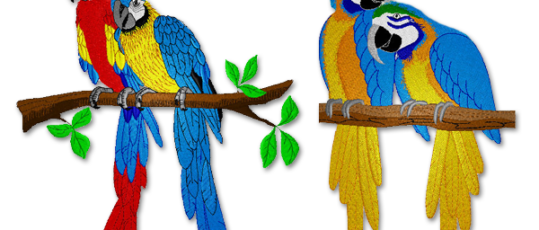Expert Digitizing for Embroidery: Fast and Reliable Solution
Expert Digitizing for Embroidery: Fast and Reliable Solution
Blog Article
Streamlining the Art of Needlework Digitizing: Step-by-Step Overview
As innovation proceeds to breakthrough, the digitization process has actually become a lot more easily accessible, permitting lovers to bring their complex layouts to life with ease. In this guide, we will unravel the intricacies of needlework digitizing, breaking down each step methodically to streamline the process and equip both beginners and seasoned embroiderers alike.
Understanding Needlework Digitizing Software Application
Embroidery digitizing software application acts as a vital device for changing elaborate styles right into digital formats suitable with embroidery devices, helping with precise sewing and personalization. This specific software application allows customers to import numerous image data layouts, such as JPG or PNG, and convert them right into embroidery machine-readable layouts like DST, EXP, or PES - Digitizing for Embroidery. By utilizing attributes like stitch editing and enhancing, rug choices, and string shade choice, digitizing software program makes it possible for customers to control every facet of the layout procedure
Moreover, advanced needlework digitizing software program provides devices for developing intricate designs, adjusting stitch thickness, and integrating complex details. Customers can additionally sneak peek the layout prior to stitching it out, making certain precision and lessening mistakes. In addition, several software application give automatic functions that aid enhance the digitizing procedure, conserving time and initiative.
Comprehending the capacities of embroidery digitizing software program is necessary for accomplishing top notch cause needlework jobs. By understanding this device, needlework lovers and specialists can release their imagination and bring complex styles to life with precision and effectiveness.

Picking the Right Layout File
After acquainting on your own with the capabilities of needlework digitizing software, the next crucial action in the procedure is selecting the appropriate design apply for your project. Digitizing for Embroidery. When selecting a layout declare needlework digitizing, it's necessary to think about the intricacy of the design, the size of the end product, and the type of material you will be functioning with
For detailed designs with great details, a high-resolution image or vector data is recommended to make sure that the embroidery machine can accurately recreate the layout. Additionally, the dimension of the end product plays a substantial role in choosing the best style documents. Bigger designs might need greater resolution files to keep clearness and intensity.
Moreover, the type of fabric you will certainly be stitching on affects the selection of layout file. Various materials may require modifications in the layout data to make certain that the stitches are properly lined up and the design looks like intended. By meticulously picking the best layout file based upon these elements, you can establish on your own up for a successful embroidery digitizing procedure.
Digitizing Devices and Strategies
Making use of specialized software application and precision strategies, digitizing devices are crucial in transforming intricate designs right into embroidery-ready files. Embroidery digitizing software application, such as Wilcom, Hatch, or Embrilliance, gives the required platform to transform art work into stitch data. These programs supply attributes like stitch editing, underlay options, and lettering tools to make sure the layout equates seamlessly onto material.
Among the essential techniques in digitizing is creating a clear course for the needlework device to follow. This involves digitizing each aspect of the style with accuracy, identifying stitch types, densities, and instructions. By utilizing tools like digitizing tablets or software-specific plugins, embroiderers can attain a high level of precision in their digitized designs.
In addition, grasping the art of padding stitching is important for creating quality needlework. Underlay stitching maintains the material and produces a structure for the layout, guaranteeing that the end product is both visually enticing and resilient. By recognizing these digitizing devices and techniques, embroiderers can elevate their craft and bring elaborate designs to life with accuracy and effectiveness.
Tailoring Stitch Types and Instructions
Having actually developed a structure in digitizing tools and strategies, a crucial facet ahead of time needlework workmanship depends on customizing stitch types and directions with precision and objective. The see this option of stitch kinds can significantly impact the general appearance and appearance of the embroidered style. Satin stitches, known for their smooth and shiny finish, job well for producing borders and message. On the other hand, fill stitches are perfect go to my site for covering larger locations successfully. By purposefully incorporating these stitch kinds, embroiderers can achieve deepness and dimension in their designs.
Furthermore, the direction of stitches plays an important function in boosting the aesthetic allure of the final embroidery. By exploring with various stitch angles and patterns, embroiderers can bring their styles to life with exceptional information and details.
Testing and Refining Your Digitized Layout
To guarantee the accuracy and top quality of your digitized design, comprehensive screening and refinement are crucial actions in the embroidery digitizing process. Once you have actually finished the digitization of your layout, it is critical to test it prior to proceeding with the actual embroidery. Evaluating allows you to identify any potential concerns such as thread breaks, sew thickness problems, or design distortions that may impact the final result.

After screening, it is very important to refine your digitized design based upon the comments from the test sew-out. This may include tweaking stitch settings, changing thickness, or making adjustments to the overall design to attain the desired end result. By iterating with testing and refinement, you can adjust your digitized layout to see this website excellence before progressing with the actual embroidery procedure.
Conclusion
In conclusion, grasping the art of needlework digitizing requires a complete understanding of the software program, picking the ideal style data, utilizing digitizing tools and strategies, customizing stitch types and instructions, and screening and fine-tuning the digitized design. By adhering to these steps, embroiderers can simplify the digitizing process and create high-quality stitched designs with accuracy and efficiency.
Report this page